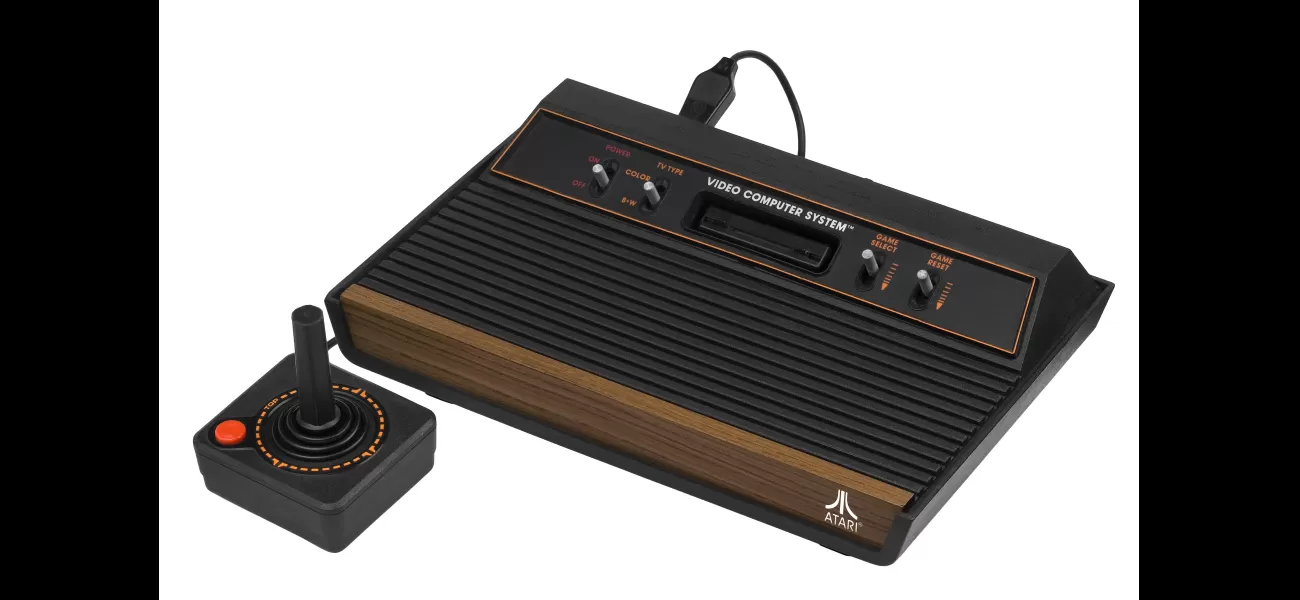The 1983 video game crash serves as a cautionary tale for the present world.
Gaming Short Stories examines the decline of the US gaming industry, from $3.2 billion to $100 million in just two years.
February 19th 2024.

In the early days of gaming, the Atari 2600 was a popular console for playing some not-so-great games. But in recent times, the gaming industry has seen a drastic change. Gaming Short Stories delves into the sudden drop in revenue from $3.2 billion to $100 million in just two years in the US.
It seems like every week, we hear about people in the video game industry losing their jobs. Big and small publishers and developers, including Microsoft's Activision Blizzard and Bethesda, Fortnite's Epic Games, and League Of Legends' Riot Games have all been affected. The main reason for this is the spike in demand for video games during the COVID pandemic. Companies were quick to hire more employees to meet the increased demand, taking advantage of low interest rates. But now that things are going back to normal and interest rates are rising, these companies are forced to make mass layoffs to stabilize their finances.
This is not a new phenomenon. If we look back in time, we can see a remarkably similar situation during the 1983 home video game crash. The industry's revenue dropped by a staggering 97%, mostly due to oversaturation in the market.
Back then, there were numerous consoles to choose from, unlike today where Microsoft, Sony, and Nintendo dominate the market. Publishers, wanting to get in on the growing industry, released their own consoles such as the Atari 2600, ColecoVision, Intellivision, Vectrex, Bally Astrocade, and Magnavox Odyssey 2. But with so much competition, only a few could survive, leading to many companies exiting the industry. This oversaturation also led to an overestimation of demand, causing publishers to release rushed and low-quality games, often made by inexperienced third-party developers.
As a result, retailers had trouble keeping up with the influx of games and started returning them. This led to a chain reaction, with many publishers going bankrupt and discounting their games to get some revenue. This, in turn, damaged the industry's reputation as people started buying these discounted, poor-quality games.
David Crane, co-founder of Activision, and a former Atari employee, later commented on the situation, saying, "Those awful games flooded the market at huge discounts, and ruined the video game business."
Major players in the market at that time, such as Magnavox and Atari, were severely affected. Magnavox completely abandoned the industry, and Atari had to lay off 3,000 of its 10,000 employees by 1983. In a notorious incident, Atari buried 728,000 copies of their unsold games, E.T The Extra-Terrestrial and Pac-Man, in a New Mexico landfill.
The industry's downfall was not felt as much in other parts of the world, like Europe, Asia, or Canada, where they preferred different formats such as home computers and locally-made games. However, in the US, the industry was struggling. Brands like Atari and Activision, although still around today, are not the same companies as before. Their names have been reused by other publishers after they went bankrupt. Commodore, another major player, also did not survive, leaving only Electronic Arts as the major US player from that era.
But the industry did eventually make a comeback, thanks to Japan. In 1985, the Nintendo Entertainment System (NES) proved to be a huge success, dominating 70% of the market by 1986. By 1988, the industry's annual sales in the US had reached $2.3 billion, slowly returning to pre-crash levels.
Fast forward to today, and the gaming landscape looks vastly different. There are fewer consoles, produced by bigger publishers, who constantly try to outdo each other by acquiring other companies and making exclusive games. The industry has grown significantly, with more people playing video games than ever before. However, it seems to have fallen into a similar trap as its predecessors did in the early 80s.
The COVID pandemic caused a temporary increase in demand, but companies took advantage of it by hiring too many employees, leading to a bubble that has now burst. This has resulted in thousands of job losses and many developers going under. The increasing time and cost of making big-budget games have also become a major problem, one that companies are reluctant to address.
It's hard to say what will save the industry from its current problems, if anything. But one thing is for sure, learning from history is a good place to start. And with that, we end our gaming history lesson for today.
Don't forget to email us, leave a comment, follow us on Twitter, and sign up for our newsletter for all the latest gaming updates.
For easier submission of letters and reader's features, you can use our Submit Stuff page.
Sign up for our exclusive gaming content and get access to the latest releases before they even hit the site.
This site is protected by reCAPTCHA and the Google Privacy Policy and Terms of Service apply.
It seems like every week, we hear about people in the video game industry losing their jobs. Big and small publishers and developers, including Microsoft's Activision Blizzard and Bethesda, Fortnite's Epic Games, and League Of Legends' Riot Games have all been affected. The main reason for this is the spike in demand for video games during the COVID pandemic. Companies were quick to hire more employees to meet the increased demand, taking advantage of low interest rates. But now that things are going back to normal and interest rates are rising, these companies are forced to make mass layoffs to stabilize their finances.
This is not a new phenomenon. If we look back in time, we can see a remarkably similar situation during the 1983 home video game crash. The industry's revenue dropped by a staggering 97%, mostly due to oversaturation in the market.
Back then, there were numerous consoles to choose from, unlike today where Microsoft, Sony, and Nintendo dominate the market. Publishers, wanting to get in on the growing industry, released their own consoles such as the Atari 2600, ColecoVision, Intellivision, Vectrex, Bally Astrocade, and Magnavox Odyssey 2. But with so much competition, only a few could survive, leading to many companies exiting the industry. This oversaturation also led to an overestimation of demand, causing publishers to release rushed and low-quality games, often made by inexperienced third-party developers.
As a result, retailers had trouble keeping up with the influx of games and started returning them. This led to a chain reaction, with many publishers going bankrupt and discounting their games to get some revenue. This, in turn, damaged the industry's reputation as people started buying these discounted, poor-quality games.
David Crane, co-founder of Activision, and a former Atari employee, later commented on the situation, saying, "Those awful games flooded the market at huge discounts, and ruined the video game business."
Major players in the market at that time, such as Magnavox and Atari, were severely affected. Magnavox completely abandoned the industry, and Atari had to lay off 3,000 of its 10,000 employees by 1983. In a notorious incident, Atari buried 728,000 copies of their unsold games, E.T The Extra-Terrestrial and Pac-Man, in a New Mexico landfill.
The industry's downfall was not felt as much in other parts of the world, like Europe, Asia, or Canada, where they preferred different formats such as home computers and locally-made games. However, in the US, the industry was struggling. Brands like Atari and Activision, although still around today, are not the same companies as before. Their names have been reused by other publishers after they went bankrupt. Commodore, another major player, also did not survive, leaving only Electronic Arts as the major US player from that era.
But the industry did eventually make a comeback, thanks to Japan. In 1985, the Nintendo Entertainment System (NES) proved to be a huge success, dominating 70% of the market by 1986. By 1988, the industry's annual sales in the US had reached $2.3 billion, slowly returning to pre-crash levels.
Fast forward to today, and the gaming landscape looks vastly different. There are fewer consoles, produced by bigger publishers, who constantly try to outdo each other by acquiring other companies and making exclusive games. The industry has grown significantly, with more people playing video games than ever before. However, it seems to have fallen into a similar trap as its predecessors did in the early 80s.
The COVID pandemic caused a temporary increase in demand, but companies took advantage of it by hiring too many employees, leading to a bubble that has now burst. This has resulted in thousands of job losses and many developers going under. The increasing time and cost of making big-budget games have also become a major problem, one that companies are reluctant to address.
It's hard to say what will save the industry from its current problems, if anything. But one thing is for sure, learning from history is a good place to start. And with that, we end our gaming history lesson for today.
Don't forget to email us, leave a comment, follow us on Twitter, and sign up for our newsletter for all the latest gaming updates.
For easier submission of letters and reader's features, you can use our Submit Stuff page.
Sign up for our exclusive gaming content and get access to the latest releases before they even hit the site.
This site is protected by reCAPTCHA and the Google Privacy Policy and Terms of Service apply.
[This article has been trending online recently and has been generated with AI. Your feed is customized.]
[Generative AI is experimental.]
0
0
Submit Comment





